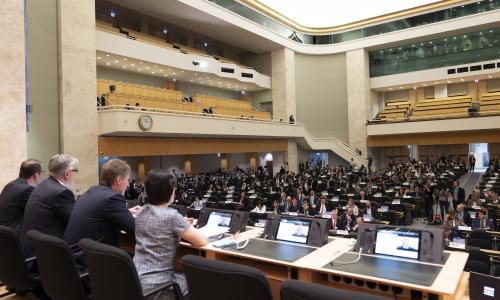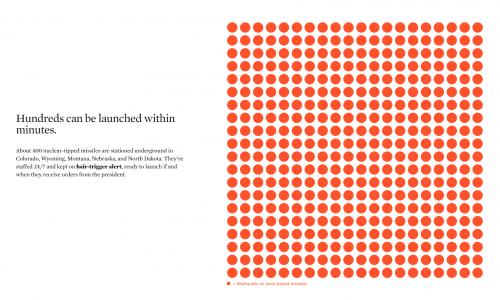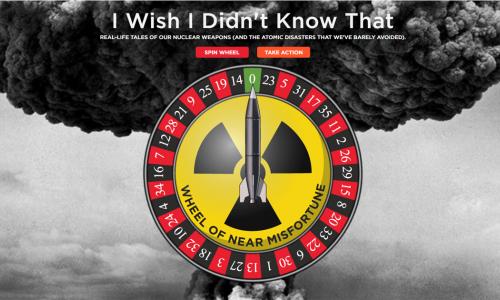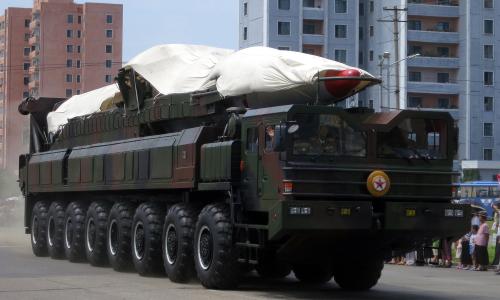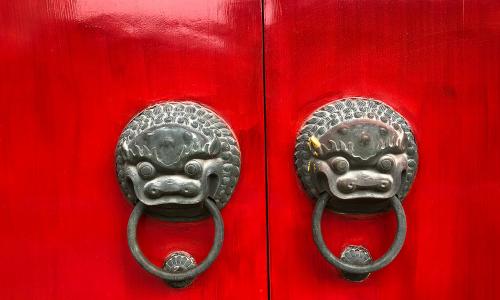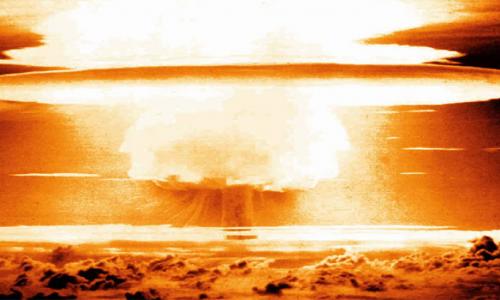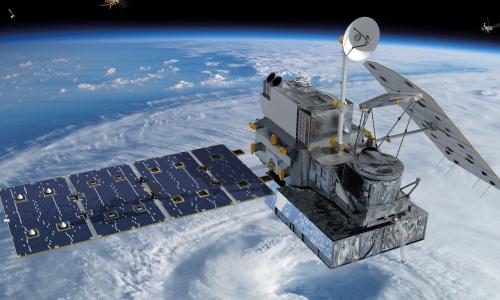Table of Contents
Nuclear weapons are still here—and they’re still an existential risk.
Nine countries possess nuclear weapons: the United States, Russia, France, China, the United Kingdom, Pakistan, India, Israel, and North Korea. In total, the global nuclear stockpile is close to 13,000 weapons. While that number is lower than it was during the Cold War—when there were roughly 60,000 weapons worldwide—it does not alter the fundamental threat to humanity these weapons represent.
For example, the warheads on just one US nuclear-armed submarine have seven times the destructive power of all the bombs dropped during World War II, including the two atomic bombs dropped on Japan. And the United States usually has ten of those submarines at sea.
Moreover, nearly all the major nuclear powers—including the United States, Russia, and China—are now significantly increasing their nuclear arsenals in size, capability, or both. This growing new arms race is raising the risk of nuclear war.
The United States
The US arsenal contains about 5,400 nuclear weapons, 1,744 of which are deployed and ready to be delivered. The weapons are kept in submarines and 80-foot-deep missile silos across five of the Great Plains states. Others are stored at air force bases, where they can be loaded on long-range bombers. One hundred US bombs are deployed at airbases in five European countries.
Roughly half of the deployed weapons are maintained on hair trigger alert, able to be launched very quickly after a presidential order. These alert forces include almost all of the 400 silo-based intercontinental ballistic missiles (ICBMs), and a comparable number of warheads on submarine-launched ballistic missiles (SLBMs). ICBMs can be launched within a couple minutes; SLBMs within 15 minutes.
The destructive capabilities of US weapons range widely. The most powerful weapon—the B83 gravity bomb—is more than 80 times stronger than the bomb dropped on Hiroshima. The smallest weapon has an explosive yield of only 2 percent of that. Such “low-yield” weapons are specifically designed to be more usable, increasing the likelihood they may actually be used.
Russia
The Russian arsenal contains ~6,000 warheads, 1,584 of which are deployed; combined with the United States, this accounts for more than 90 percent of the world’s nuclear weapons. Antagonism between the United States and Russia goes a long way in explaining the slow pace of nuclear weapons reductions.
While the two nations have agreed to extend their only remaining bilateral arms control treaty, dubbed “New START,” treaty implementation is currently suspended and is unlikely to resume until there is some resolution to Russia’s war on Ukraine. Russia has also recently moved forward with deratification of the Comprehensive Test-Ban Treaty, seeking to “mirror” the United States, which signed the treaty without ratifying it in 1996. Russia has also previously made it clear that it will only make further nuclear reductions if US missile defenses are also legally constrained.
While Russia has said it will not resume explosive testing unless the United States does, uncertainty around the global commitment against nuclear testing increases the danger of a new arms race.
China
China developed nuclear weapons during the Cold War and has since maintained a relatively modest arsenal. However, the three legs of its nuclear forces, also known as its nuclear triad, are in the process of being strengthened and expanded , spearheaded by the construction of three Intercontinental Ballistic Missiles (ICBM) silo fields in three Northwestern China locations.
The exact size of China’s arsenal is unclear; scientists estimate it at approximately 410, while the Pentagon claims it has reached 500 and will continue to grow. Because of its modest size, China maintains ambiguity around its arsenal, and US estimates have been wrong several times in the past. Just over a hundred of these warheads are assigned to missiles that could reach the United States.
Unlike Russia and the United States, China does not keep its missiles on hair-trigger alert. Most of the warheads are not attached to their missiles during peace time. This posture complements China’s long-held “no-first-use” nuclear policy. China’s buildup is not necessarily indicative of a change to a more aggressive nuclear posture. The goal is most likely to increase confidence in the arsenal’s survivability in the event of an adversary strike, a long-time objective of China’s nuclear deterrent.
China, like Russia, is concerned about continued US investment in first strike options and missile defenses. US and Chinese experts have warned these concerns may cause Chinese leaders to increase the quantity and improve the quality of its weapons. In the absence of diplomatic initiatives, China is likely to continue expanding and improving its nuclear forces.
The United Kingdom
The United Kingdom has an estimated 120 “operationally available” nuclear weapons (warheads that are onboard their submarines or can be loaded fairly quickly). The country has 40 deployed at any given time. All of these weapons are sea-based and carried by Trident submarine-launched ballistic missiles purchased from the United States.
Reversing a previous pledge that it would not exceed a maximum of 180 nuclear warheads, the United Kingdom has announced that its new ceiling would be 260 warheads, an increase of more than 40 percent.
France
France maintains an arsenal of approximately 290 deployed nuclear weapons. Most of these are based on submarines, with the remainder on air-launched cruise missiles. France sees its deterrence strategy as strictly defensive, but does not rule out the possibility of being the first to use nuclear weapons in “extreme circumstances of legitimate self-defense."
North Korea
As the Cold War ended, North Korea found itself in economic turmoil. Desperate for diplomatic leverage and eager for security assurances, its leaders accelerated a nuclear program. Attempts by the United States to limit North Korea’s nuclear and missile programs have ended in broken promises on both sides.
Today, North Korea has enough nuclear material for 45 to 55 nuclear warheads, and may have assembled 20 to 30 weapons. It also continues to develop its long-range missile capabilities, though its capabilities remain unclear.
These developments present new challenges for East Asia. The United States will need to coordinate with its Asian allies and China if it is to resume productive talks with North Korea, a task made more difficult by the deterioration of US-China relations.
India
India possesses about 160 nuclear weapons and is producing more. Although long-simmering conflicts with Pakistan have historically been the focus of India’s nuclear program, it is also increasingly concerned about relations with China. This complicates the regional situation further, as any moves that India makes to modernize its nuclear weapons in response to China will inevitably threaten Pakistan, and could increase the chance of an arms race.
Pakistan
Analysts believe that Pakistan has steadily grown its arsenal to 170 nuclear weapons in recent years and is still producing more. The future size and makeup of its arsenal likely depends heavily on what India does. An increased emphasis on short-range, “tactical” nuclear weapons, however, raises concerns that Pakistan may be lowering the threshold for using these weapons.
Israel
Israel does not acknowledge having nuclear weapons, but it is commonly accepted that the country maintains roughly a hundred weapons. Its arsenal makes other nearby countries more interested in acquiring technology for nuclear energy that could, if diverted, allow them to build nuclear weapons.
